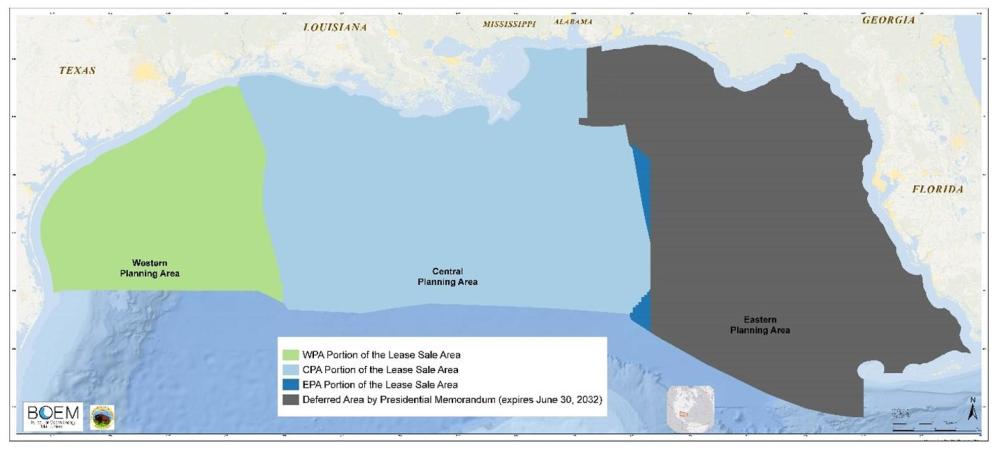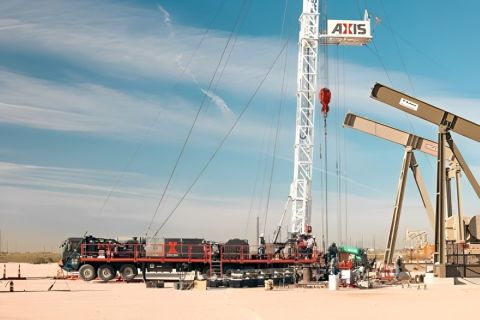
The Biden administration’s new five-year plan phases down oil and gas leasing in the Gulf of Mexico. (Source: Shutterstock)
The new offshore leasing program for the U.S. is final, and the only three oil and gas lease sales planned for the five-year window will be in the Gulf of Mexico (GoM).
In late September, the Biden administration proposed a 2024–2029 National Outer Continental Shelf (OCS) Oil and Gas Leasing Program that included the minimum number of lease sales required by the Inflation Reduction Act (IRA) to permit offshore wind lease sales.
The IRA prohibits the Bureau of Ocean Energy Management (BOEM) from issuing a lease for offshore wind development unless the agency has offered at least 60 million acres for oil and gas leasing on the OCS in the previous year. The program schedules oil and gas lease sales in the GoM in 2025, 2027 and 2029.

The Biden administration has a goal of achieving 30 gigawatts of offshore wind by 2030.
At the time the three-sale program was announced, industry leaders criticized the Biden administration’s plan, calling it restrictive and saying it jeopardized the country’s energy security.
In an emailed response regarding the finalization of the program, NOIA President Erik Milito told Hart Energy that the Biden administration’s severe limit of oil and gas leasing curtails access to a critical national asset.
“The White House simply ignores energy realities by once again limiting U.S. energy production opportunities. With global demand at record levels and continuing to rise, regressive policies will harm Americans of all walks of life by putting upward pressure on prices at the pump, destroying good-paying jobs that form the fabric of Gulf Coast communities and relinquishing geopolitical advantages of energy production to countries like Russia, Iran and China,” he wrote.
He said policies that limit domestic offshore development will force the U.S. to rely more on energy imports, often from countries with higher emissions.
“This jeopardizes our energy security and economic prosperity and undermines our efforts to reduce emissions and combat climate change—goals purportedly championed by the current administration,” he wrote.
Recent planned lease sales have been sources of contention, with the cancellation of the final three sales in the 2017-2022 plan—GoM Lease Sales 259 and 261 and the Cook Inlet Lease Sale 258.
Lease Sale 261, the subject of legal challenges, has been on-again, off-again. The BOEM is slated to livestream the opening of Sale 261 bids on Dec. 20.
Recommended Reading
AI Poised to Break Out of its Oilfield Niche
2024-04-11 - At the AI in Oil & Gas Conference in Houston, experts talked up the benefits artificial intelligence can provide to the downstream, midstream and upstream sectors, while assuring the audience humans will still run the show.
TGS Commences Multiclient 3D Seismic Project Offshore Malaysia
2024-04-03 - TGS said the Ramform Sovereign survey vessel was dispatched to the Penyu Basin in March.
Quantum Capital’s View on AI: Lots of Benefits, Pain Points
2024-05-16 - The energy industry is lagging in the race to implement AI, but Sebastian Gass, CTO of Quantum Capital Group, offered a few solutions during Hart Energy’s 2024 SUPER DUG Conference & Expo.
Axis Energy Deploys Fully Electric Well Service Rig
2024-03-13 - Axis Energy Services’ EPIC RIG has the ability to run on grid power for reduced emissions and increased fuel flexibility.
OTC: E&Ps Improving Operational Safety with Digitization
2024-05-13 - Artificial intelligence and the digitization of the oilfield have allowed for several improvements in keeping operators out of harm’s way, panelists said during the 2024 Offshore Technology Conference.





